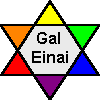Kabbalah and Medicine
Physiological Systems according to Kabbalah - The Extended Model(1) From the basic analysis of the body in the previous chapter we can proceed to a more detailed analysis where each of the ten properties of the soul is explicitly related to a physiological system in the body. As with regard to many models, when analyzed in parallel to the basic frame of reference of Kabbalah, the ten sefirot, the ten general soul properties sub-divide further in the course of analysis--in this presentation they are in fact broken into twelve categories when seen to correspond to the basic physiological systems of the body. The first property, the super-conscious crown, corresponds to the respiratory system, the physical conduit through which the spirit of life enters the body. When God created man, He "formed man of the dust of the ground, and breathed into his nostrils the breath of life." The breath of life comes from God on high, the source of all life. In breathing, we internalize that which is exterior to us; we inhale from that which is above us. The Hebrew word for "inhaling" (she’ifah) means as well "aspiration." Thus, breathing is an expression of the soul’s innate desire to ascend and go beyond its conscious self, into the realm of its super-conscious link to Divinity (as experienced in its super-rational faith, pleasure, and will). Chochmah, the yud in God's Name, corresponds to the bone marrow. Major medical research now regards bone marrow as a system in its own right. Bone marrow is responsible for producing blood cells--the most basic biological unit in the body. Just as bone marrow produces these blood cells, so too, everything stems from chochmah, since "You have made everything with wisdom." Binah, which is on the left side of the sefirotic tree, is associated with the blood itself, now considered to be a physiological system in its own right (in addition to the system of the blood vessels). Binah, which means "to build," receives its raw material from chochmah, the bone marrow, expanding its encoded information. In Kabbalah, binah is referred to as the "mother" whose primary contributions to the formation of her child are the red aspects of his or her body, as is stated in the Talmud. In contrast, chochmah is referred to as the "father," who generates the white aspects of the body, such as the bones. These two relatively abstract physiological systems--the bone marrow and the blood--assume the general roles of "father" and "mother" in the body and function together in perfect union. In Kabbalah, the continual union of the "father" and "mother" principles is responsible for the ongoing creation of reality. In the words of the Zohar: the father (here, the bone marrow) and the mother (here, the blood) are "two partners that never separate." Their union, expressing the inner creative power of the living soul, is continuous--the bone marrow continuously creates new blood cells. The sefirah directly under chochmah on the right axis of the sefirotic tree is chesed. Chesed is personified by the first Jew, Abraham, as seen in the verse, "Give loving-kindness to Abraham." The numerical value of Abraham's name (248) is equivalent to the number of bones in the body, which is detailed in the Mishnah. This is also the number of positive commandments of the Torah. Consequently, chesed, the attribute of Abraham, is identified with the skeletal system. The phrase "the God [or source of life] of Abraham," is understood in Kabbalah to refer to the overarching force above Abraham, the power of chochmah located on the sefirotic tree in the right axis of the sefirot above the power of chesed. The bones of the body act as the vessels or containers for the more abstract level of bone marrow. Thus, "the God of Abraham" refers to the system of the bone marrow above the system of the skeleton. While binah refers to the blood, it is the property of gevurah, or restraint--located directly beneath binah on the left axis of the sefirotic tree--that gives "shape" and direction to the blood, controlling its circulation throughout the body. The power of restraint channels the blood and directs it into specific vessels, which according to Kabbalah, are the 365 major arteries and veins corresponding to the 365 days of the solar year and the 365 negative commandments of the Torah. While we might first regard the blood and blood vessels as a single system, they are now understood to be two separate systems, as mentioned above. In Chassidut we are taught that the force of contraction (gevurah) that the blood vessels exert on the blood itself serves to strengthen the life force inherent in the blood. A new chapter is both uploaded to the web and sent out every week via the Inner Dimension (free) weekly Torah message email list. Click here to subscribe now!
|
